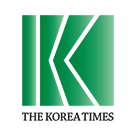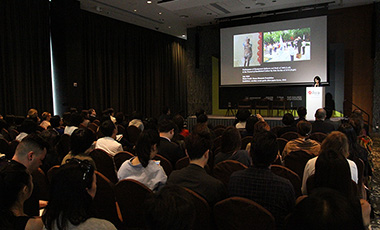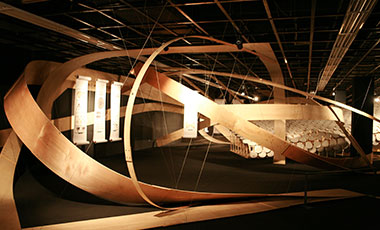
Yoo Young-kuk's "Work" (1967) / Courtesy of the artist and Kukje Gallery
Yoo Young-kuk (1916-2002) was an artist ahead of his time. The artist often said his work wouldn't be sold in his lifetime, considering its abstractness emphasizing nature through basic formative elements.
He sold his first painting when he was 60. "He was known as an artist who did not sell his works, but I think it was more like he found no one to buy them. Back then, society did not understand abstract art and people from his hometown said they wouldn't accept works as a gift," recalled Yu Jin, chairman of the Yoo Youngkuk Art Foundation and son of the artist.

Late artist Yoo Young-kuk as a student in Japan in the late 1930s-early 40s / Courtesy of the Yoo Youngkuk Art Foundation
Yoo's works were recently rediscovered and are on the rise in the art market as well. In September, his 1959 painting "Work" broke the artist's price record and sold for 600 million won ($530,000).
The "Colors from Nature" exhibition at Kukje Gallery in downtown Seoul sheds light on how the artist developed his own style of abstract mountains in strong colors and split faces.
he exhibit comes after a major retrospective of Yoo at the National Museum of Modern and Contemporary Art, Korea (MMCA) in 2016.
"The MMCA exhibit featured Yoo's works in chronological order and this exhibit centers on his prime time as the first generation of modern art in Korea," Kukje Gallery curator Choi Bo-kyung said.
Born in 1916 in Uljin, then Gangwon Province, Yoo went to Japan to study art at Bunka Gakuin University and pursued avant-garde art, influenced by Western Surrealism and Constructivism.
The first part of the exhibit held at Kukje Gallery K2 features Yoo's early works from his early days, an archive of Yoo's photographic works from his time in Japan and other documents from the beginning of modern Korean abstract art.
"Yoo experimented with photography and focused on the object's texture and geometric elements, not ordinary scenery," Choi said.
Yoo's early paintings from 1958 are on view on the first floor. "The paintings reflect the artist's perspective on nature and his experience in search for geometric order," the curator said.
At K3, his later works from 1964 are on display. Mostly in red and yellow, Yoo's paintings pursue the purest form derived from mountains. "He suggests a way of Korean abstract art and modernism," Choi explained.
Yu said his father was more of a person who struggled than a genius.
"He always said he was studying art, while we thought he was painting. Being an artist is a lonely job and he devoted himself to the solitary vocation for decades ― sincerely, without complaint," Yu said.
The son said Yoo had made trips on a fishing boat after returning to Korea from studying in Japan in 1943.
"He saw many sunrises on the boat, while fishing for squid and mackerel. The sun must have influenced his color choices in red and orange hues," Yu explained.
The exhibit is extended through Oct. 21. Admission is free. For more information, visit kukjegallery.com or call 02-735-8449.
※ This article was originally published on Korea Times (9 OCT 2018) and republished under authority of an agreement between KAMS and Korea Times.
http://www.koreatimes.co.kr/www/culture/2018/10/135_256695.html



